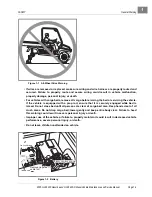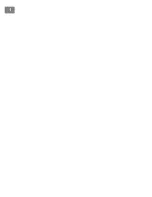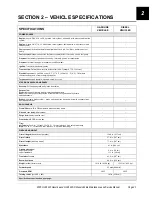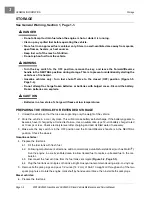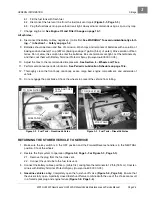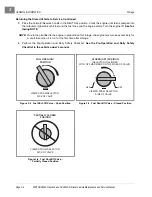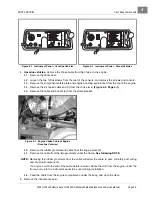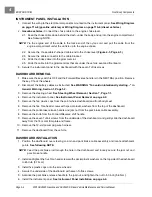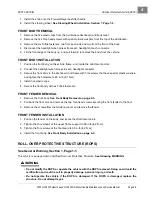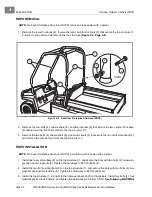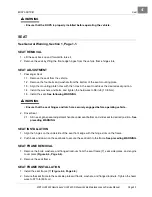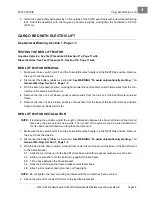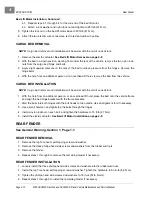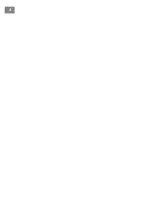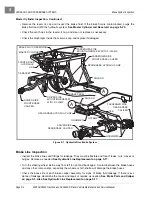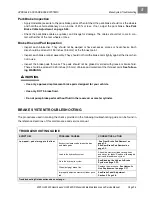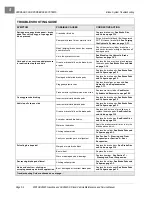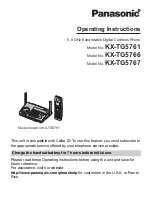
BODY AND TRIM
Front Body Repair
Page 4-2
2005 HUV4420 Gasoline and HUV4420-D Diesel Vehicle Maintenance and Service Manual
4
Seat Cleaning, Continued:
CAUTION
• To prevent damage to the vehicle when removing difficult stains or heavy soiling, remove the
seat from the vehicle first.
FRONT BODY REPAIR
See General Warning, Section 1, Page 1-1.
ABRASIONS AND HAZE
The original gloss can be restored by hand buffing with “Novus Plastic Polish”, “Mirror Glaze Professional
Formula Number 17”, or similar polishing compounds. A buffing wheel with a small amount of automotive
type paste wax applied to the pad may also be used. Use a very light touch, because ABS/DR acrylic pol-
ishes easily. Johnson’s
®
“J-Wax” or “Kit” may be applied as a final treatment.
LIGHT SCRATCHES
Ajax cleanser applied dry and hand-rubbed will rapidly smooth moderate scratches. Use a soft polishing
compound to restore gloss.
Scratches (up to 10 mils; the equivalent thickness of an average business card) can be removed by light
sanding. Start with wet silicone carbide abrasive paper (320 grit or finer). Use progressively finer grits (i.e.
400, 600, 800) to reduce sanding marks. Use Ajax cleanser (or equivalent) for final smoothing. A “Micro
Mesh” acrylic polishing kit with abrasive papers from 1800 to 8000 grit will provide the best final finish.
Restore gloss with soft polishing compound. It is not the intent of any of these processes to fill-in the material
removed due to light scratches but rather to blend the finish of the surrounding area and the scratch together.
LARGE SCRATCHES AND ABRASIONS
Touch-up is not recommended. Replace the entire body part or have it repaired by a professional paint and
body repair shop with experience repairing ABS/DR acrylic bodies.
FRONT BODY COMPONENTS
See General Warning, Section 1, Page 1-1.
INSTRUMENT PANEL REMOVAL
1. Loosen and remove the seven Tuflok
®
screws from the instrument panel.
2. Pull the top of the instrument panel forward to access the panel rear.
3. Disconnect the wiring from components mounted on the instrument panel.
Summary of Contents for HUV4420
Page 1: ... 5 5 2 4 56 56 3 3 6 3 4 3 26 5 ...
Page 2: ......
Page 16: ...Page xiv 2005 HUV4420 Gasoline and HUV4420 D Diesel Vehicle Maintenance and Service Manual ...
Page 20: ...1 ...
Page 38: ...4 ...
Page 68: ...5 ...
Page 74: ...6 ...






